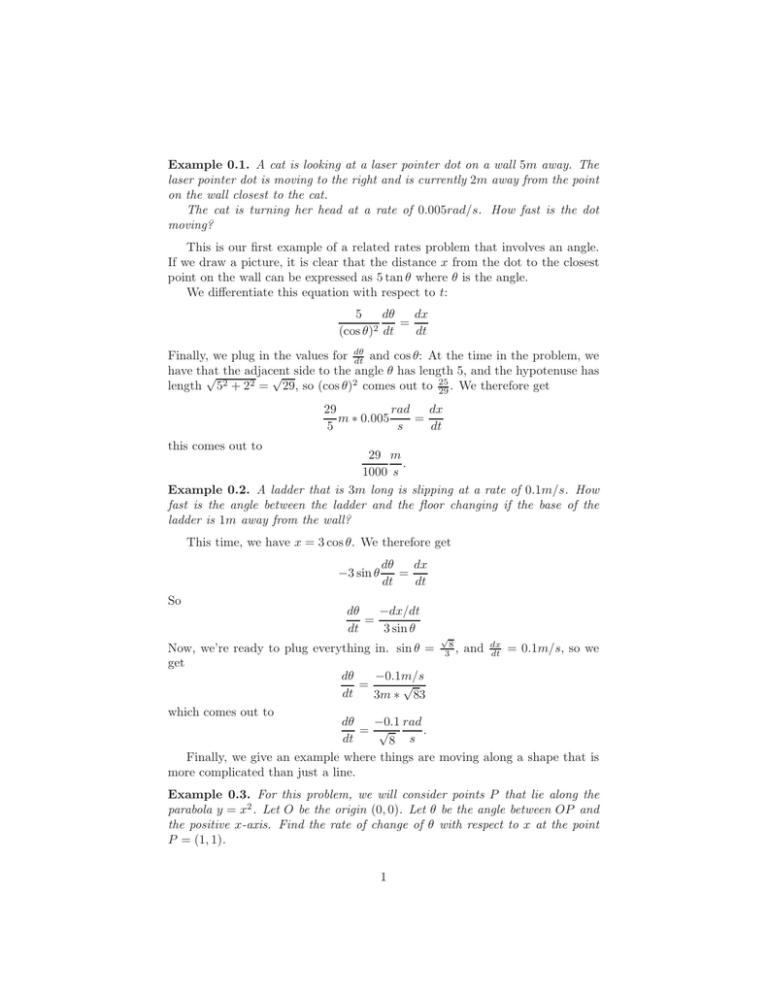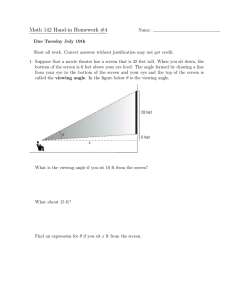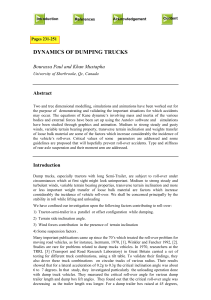A cat is looking at a laser pointer dot on... 5m away. The Example 0.1.
advertisement

Example 0.1. A cat is looking at a laser pointer dot on a wall 5m away. The laser pointer dot is moving to the right and is currently 2m away from the point on the wall closest to the cat. The cat is turning her head at a rate of 0.005rad/s. How fast is the dot moving? This is our first example of a related rates problem that involves an angle. If we draw a picture, it is clear that the distance x from the dot to the closest point on the wall can be expressed as 5 tan θ where θ is the angle. We differentiate this equation with respect to t: 5 dθ dx = (cos θ)2 dt dt Finally, we plug in the values for dθ dt and cos θ: At the time in the problem, we have that the adjacent side to the angle θ has length 5, and the hypotenuse has √ √ length 52 + 22 = 29, so (cos θ)2 comes out to 25 29 . We therefore get 29 rad dx m ∗ 0.005 = 5 s dt this comes out to 29 m . 1000 s Example 0.2. A ladder that is 3m long is slipping at a rate of 0.1m/s. How fast is the angle between the ladder and the floor changing if the base of the ladder is 1m away from the wall? This time, we have x = 3 cos θ. We therefore get −3 sin θ So dθ dx = dt dt dθ −dx/dt = dt 3 sin θ √ Now, we’re ready to plug everything in. sin θ = 38 , and dx dt = 0.1m/s, so we get dθ −0.1m/s √ = dt 3m ∗ 83 which comes out to −0.1 rad dθ = √ . dt 8 s Finally, we give an example where things are moving along a shape that is more complicated than just a line. Example 0.3. For this problem, we will consider points P that lie along the parabola y = x2 . Let O be the origin (0, 0). Let θ be the angle between OP and the positive x-axis. Find the rate of change of θ with respect to x at the point P = (1, 1). 1 We have that tan θ = xy , so differentiating gives: x dy dθ 1 dx − y = 2 (cos θ) dx y2 The angle θ is equal to π4 radians, so the cosine is (1, 1), and x an dy are both 1, so we get: 1 dθ 2−1 = 2 dx 1 so dθ dx = 2. 2 √1 . 2 We have that dy dx = 2 at





